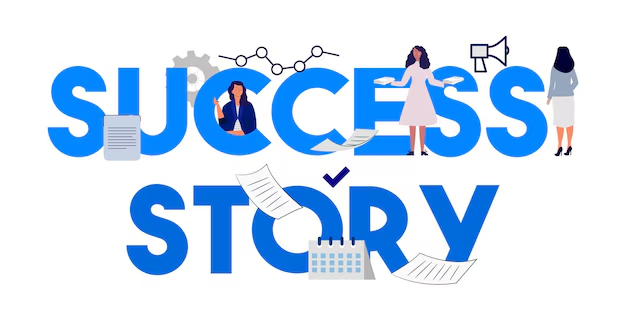Introduction: Creating for Fun, Earning by Surprise
When Alex started her DIY blog, she had zero intentions of making money. “I just wanted to document what I was making and share tutorials with my friends,” she says. What began as a simple creative outlet for stress relief and self-expression soon attracted more than just friends and family. Within a year, her blog was receiving thousands of visits per month. Within two years, she had turned it into a side income stream—earning from ads, affiliate links, digital products, and brand partnerships. Today, her blog is a profitable platform that supports both her creativity and her finances. This is the story of how one DIY lover turned their passion into a growing business—and how you can follow a similar path, even as a beginner.
Step 1: Starting with the Basics (and Imperfection)
Alex didn’t wait for the “perfect” time to start blogging. She launched her site using a simple WordPress template, a free logo she made on Canva, and a basic hosting plan. “I didn’t have fancy equipment or a strategy,” she admits. “I just started posting tutorials with step-by-step photos and kept it real.”
Her first posts featured things like homemade candles, painted jars, and budget-friendly dorm decor. Over time, she developed a unique voice—equal parts practical and playful—which kept readers coming back. The lesson? Start with what you have. Consistency is more powerful than perfection.
Step 2: Growing a Community—One Project at a Time
Alex began sharing her posts on Pinterest, which turned out to be a major growth tool. Her tutorials, formatted with catchy titles like “5-Minute DIY Desk Organizer” and “Dollar Store Decor That Looks Expensive,” quickly gained traction.
“Pinterest brought most of my early traffic,” she explains. She also created an Instagram account where she posted behind-the-scenes clips, project fails, and real-time updates. Her authenticity stood out in a space full of polished perfection. Readers commented not only for the ideas, but to share their own experiences and variations. Over time, a genuine community formed around her blog.
Step 3: Monetizing Without Losing Her Voice
Monetization came gradually—and intentionally. Alex wanted to earn money, but not at the cost of her creative identity or reader trust. So she started small:
- Affiliate links: She joined programs like Amazon Associates and ShareASale, adding links to tools and supplies she already used in her tutorials.
- Display ads: Once her blog hit consistent traffic (over 10,000 monthly visitors), she applied to an ad network, which added passive income through page views.
- Digital products: She created downloadable planner pages, DIY printables, and a beginner’s eBook called “Crafting on a Budget.”
“The key was making sure every product or link actually served my readers,” Alex says. That approach not only protected her brand but increased conversion rates and return visitors.
Step 4: Landing Her First Brand Collaboration
One of Alex’s proudest moments was getting an email from a small craft supply company that wanted to collaborate. “They offered me free supplies and $150 to feature their products in a new tutorial,” she says. That might seem small to some—but for Alex, it was proof that her blog had real value.
After that first collaboration, she created a media kit using Canva, listing her blog stats, social reach, audience demographics, and sample post links. She then started pitching brands she genuinely liked—sometimes just by messaging them on Instagram or using PR emails from their websites.
Soon, her side income grew to include:
- Paid sponsored posts ($100–$500 each)
- Free supplies and tools (cutting machines, paints, planners)
- Early access to new product lines
Her blog remained helpful and honest—she never promoted anything she wouldn’t use herself.
Step 5: Balancing Content Creation and Life
Running a blog while managing school and part-time work wasn’t easy. Alex learned to batch her content, often planning, shooting, and scheduling two or three blog posts in one weekend. She used tools like:
- Trello to plan her content calendar
- Canva Pro for design templates
- Tailwind to schedule Pinterest pins automatically
“It wasn’t about working more—it was about working smarter,” she says. By organizing her workflow, she saved time and stayed consistent, even during finals or burnout periods.
By the Numbers: What Her Blog Earned in a Year
In her second year of blogging (still part-time), here’s what Alex earned:
- Affiliate income: $1,100
- Ad revenue: $2,600
- Digital products: $900
- Sponsorships: $1,500
- Total income: $6,100
Not life-changing—but certainly life-enhancing. More than just the money, the blog gave her freedom, confidence, and proof that her passion had value.
Alex’s Advice to Other Creators
- Start messy, and refine as you go
- Talk to your audience like they’re friends—not followers
- Only promote what you believe in
- Create evergreen content—projects people can revisit anytime
- Track what works, but don’t obsess over numbers
Conclusion: The Internet Rewards Real People
Alex’s journey is proof that authentic creators still win online. You don’t need a million followers, a big budget, or a flawless brand to succeed. What you need is consistency, creativity, and the courage to share what you make. Whether you’re into crafts, journaling, organizing, or upcycling—your skills could inspire someone else, and even support your bank account. So if you’ve been waiting to start your own blog or share your ideas, take a page from Alex’s story and start now. Your passion might just become your next paycheck.


























